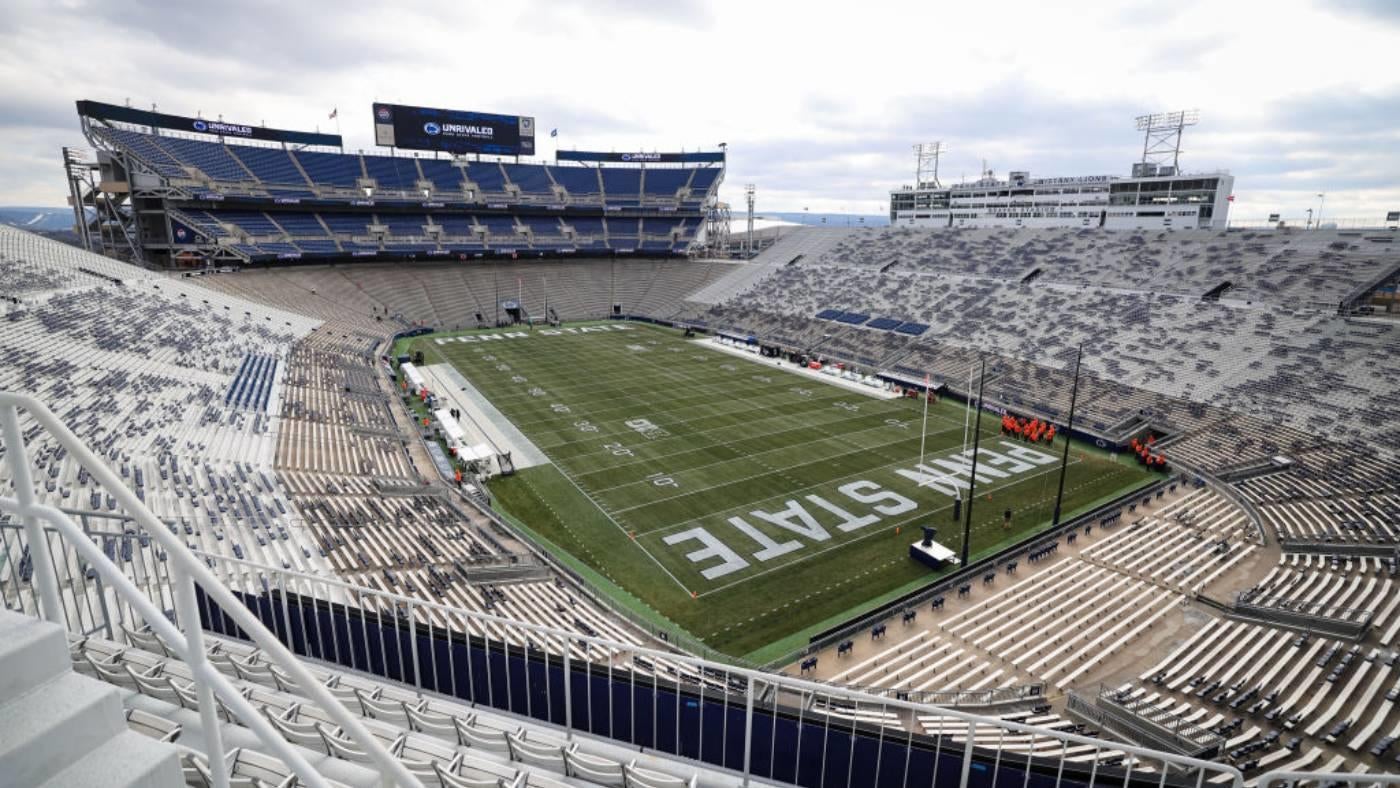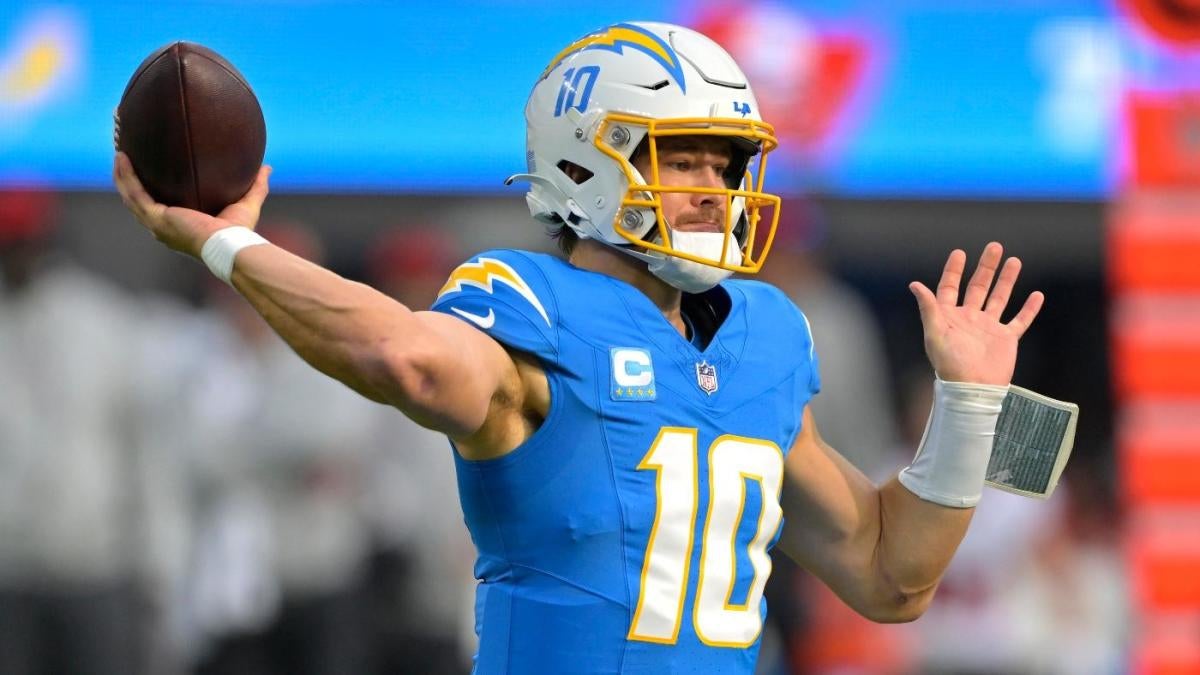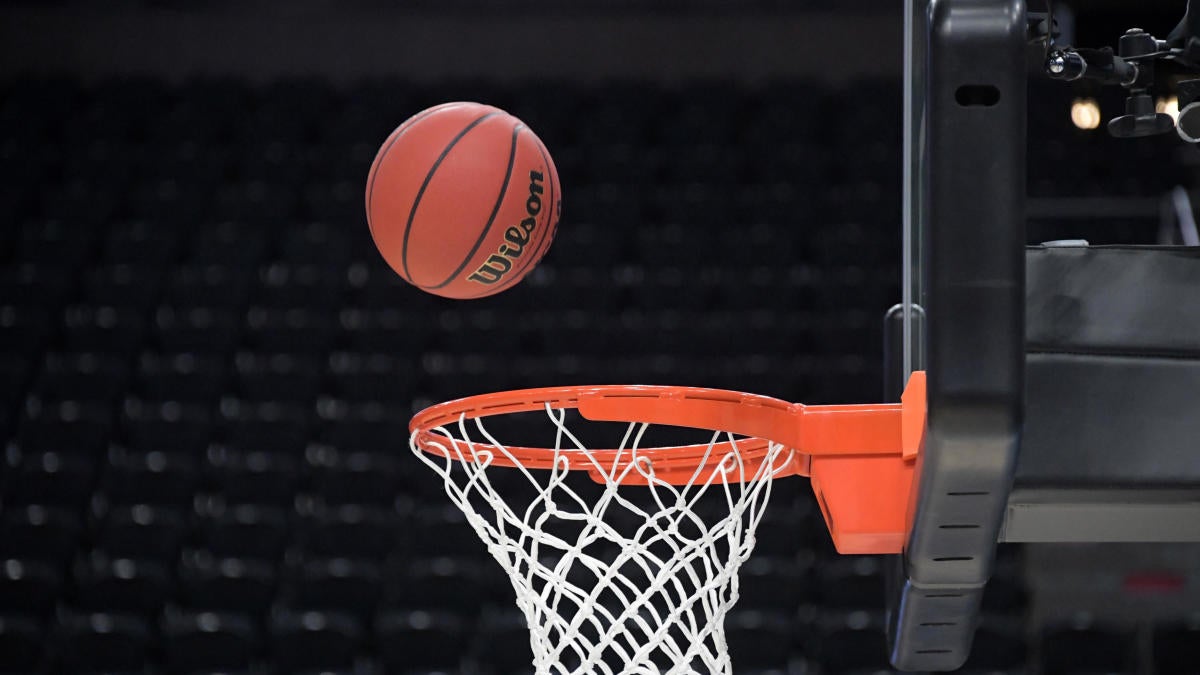
Penn State’s Beaver Stadium has been hosting college football games since it first opened in 1960. However, subfreezing mid-December temperatures presented challenges that required a multi-million dollar winterization of Happy Valley’s massive football cathedral as it prepares to host the first-ever on-campus College Football Playoff game.
“We spent $4.5 million for this moment,” Penn State athletic director Pat Kraft said in a conversation with CBS Sports.
Such is life for three of the four sites north of the Mason-Dixon Line hosting first-round games in the College Football Playoff this week. Cold weather and potential snow are forecast in State College, Pennsylvania, where the university usually shuts down the stadium in December, turning off the water and applying electrical heat tape to pipes to prevent breaks and leaks in the offseason.
“If not [for the changes], there would have been a lot of flushing toilets to keep the water running,” Kraft said with a laugh. “It would have been someone’s job to run around the building flushing toilets.”
Penn State, Ohio State, Notre Dame and Texas have spent the better part of 18 months preparing to host the first round of on-campus games in playoff history. The logistical challenges have been massive. Most fans tuning into the games this weekend will never realize how much preparation was needed for this moment.
“I don’t want to jinx anything, but we’ve been very impressed with how ready, willing and able the campuses have been,” said Brett Daniels, the CFP’s senior director of communications and branding. “We thought there might be more concerns, questions, pushback on things, but we spent the last year working closely with the schools and the conferences to build a general plan that made sense.”
College Football Playoff payouts
- $3 million to cover expenses for each team in each round
- $4 million for each of the 12 teams that makes the College Football Playoff
- $4 million for each of the 8 teams that makes the College Football Playoff Quarterfinals
- $6 million for each of the 4 teams that makes the College Football Playoff Semifinals
- $6 million for each of the 2 teams that makes the College Football Playoff National Championship Game
Casting a wide net
During the four-team playoff’s history, the CFP worked and consulted on six bowl games that rotated as semifinal hosts, but this wasn’t as substantial as advising and planning 11 games in the new 12-team playoff.
First-round games on campuses presented a more daunting challenge. After all, any of the 134 teams in the FBS could reach the new 12-team field, meaning any school could also host an on-campus game. Eighteen months ago, the CFP held meetings and hired consultants to make a plan for a potential playoff game on all 134 campuses.
They met every two to three weeks, developing plans for team charters, buses and hotel space. Campuses unfamiliar with big games had to determine how to host massive TV compounds for ESPN. Visitor locker rooms, already small by design, had to be prepared to host full rosters of 120 or more players, which meant auxiliary spaces had to be secured for overflowing coaching staffs and players.
No detail was overlooked, Daniels said. They also discussed whether to present trophies to winners in the first round, but that idea was quickly nixed.
The CFP circulated hosting manuals to schools in the summer. In the spring, they sent surveys to all 134 schools, with a due date of Sept. 1. Every campus was required to develop a “snow and ice plan” and provide locker room space with heating and air. The CFP used those surveys to build a database.
Kansas and Northwestern could not host on-campus games because of ongoing stadium projects. At one time, Miami faced a scheduling issue with a soccer match at Hard Rock Stadium and the NFL’s Miami Dolphins hosting the San Francisco 49ers on Sunday. But the soccer event was canceled, alleviating concerns.
Graduation ceremonies also complicated hotel situations, as thousands descended on small college towns, eating up hotel rooms and clogging roads. Penn State rescheduled its graduation ceremonies at the nearby Bryce Jordan Center from Saturday to Sunday and many universities made similar changes a year ago in preparation.
“It’s (a) learning and building the plane as you fly type of thing in many ways,” said Kerry Kenny, chief operating officer at the Big Ten, which will host two playoff games this weekend. “But credit to the CFP for doing the due diligence on the front end.”
The CFP hired College Sports Travel, a widely used agency that determines the best hotel spaces for visiting teams in all 134 college towns. They signed contracts with hotels in or near each of the 134 sites and started releasing rooms as early as September and October as teams were eliminated from playoff contention.
Home teams are charged with booking hotel space for their tea, while the CFP arranges it for visiting teams and staff.
“We certainly didn’t want to hold rooms in places we weren’t going, because we may need to go back there in a year or two, and we want to make sure we stay on good terms with everybody,” Daniels said.
The process was long and tedious.
Thankfully, the first CFP Rankings in early November helped narrow the logistical team’s focus. Daniels said their meetings shrank to roughly 30 teams, then 25, following the second batch of rankings on Nov. 12.
There was one small fly in the ointment: Boise State.
“That was one of our bigger challenges,” Daniels said.
For a short window of time, it appeared possible Boise State could host a first-round game. That presented scheduling issues with the Famous Idaho Potato Bowl, hosted by Boise State, on Dec. 23. The CFP, ESPN and Boise State discussed contingencies for hotel space and the possibility of rescheduling the Dec. 23 Famous Idaho Potato Bowl. Hosting a playoff game two or three days before another bowl game was impractical. Hotel space was difficult to secure, and Boise State’s facilities were booked, which are required to allow participating teams in the Potato Bowl access for three practices before their game.
“There weren’t a lot of [rescheduling] options and [Christmas Eve] was looking like it would be the most practical,” said Danielle Brazil, executive director of the Potato Bowl.
Ultimately, Boise State received a first-round bye and the bowl game remained on Dec. 23. No. 3 Boise State will play the winner of SMU-Penn State in the Fiesta Bowl on New Year’s Eve.
On-campus College Football Playoff games
| Date & Time (ET) | Teams | Stadium | Year Opened | Capacity | Broadcast Channel |
|---|---|---|---|---|---|
| Friday, Dec. 20, 8:00 PM | Indiana at Notre Dame | Notre Dame Stadium | 1930 | 77,622 | ABC/ESPN |
| Saturday, Dec. 21, 12:00 PM | SMU at Penn State | Beaver Stadium | 1960 | 106,572 | TNT/Max |
| Saturday, Dec. 21, 4:00 PM | Clemson at Texas | DKR–Texas Memorial Stadium | 1924 | 100,119 | TNT/Max |
| Saturday, Dec. 21, 8:00 PM | Tennessee at Ohio State | Ohio Stadium | 1922 | 102,780 | ABC/ESPN |
The mad dash
Administrators at the 12 playoff schools have racked up frequent flyer miles this week, visiting first-round sites and potential bowl locations for the second and third rounds.
For Clemson, that means visiting Texas, the Peach Bowl and the Cotton Bowl to help plan travel and get ahead of potential logistical challenges for game days in those facilities. There’s also coordinating ticket opportunities for fans through the CFP, which runs ticketing for all playoff games.
It’s a mad dash for something that may never happen.
“We have to win and keep going, but we also have to plan for that game at the moment and then pass the preparations ahead,” Clemson athletic director Graham Neff said. “It’s been hard to manage the demand we have had and how we’ve worked to be really comprehensive with that, with students and our donors.”
Neff sighs and smiles.
“But happy to be there.”
The CFP controlling prices means double or triple the amount season-ticket holders usually pay at sites like Texas. The 12,000 students provided access to tickets were charged an additional $25, said Drew Martin, Texas’ executive senior associate athletics director in charge of external affairs.
Home playoff teams garner $4 million in payments from the CFP to their conferences. Schools run and retain concession sales.
Visiting teams are allotted only 3,500 tickets, including band and cheer teams. That has forced many traveling fans to seek tickets elswhere.
Rabid Tennessee fans discovered a pre-sale code for their first-round game against the Buckeyes on Ticketmaster, the official ticketing partner of the CFP. They gobbled up tickets, prompting Ohio State athletics director Ross Bjork to challenge Buckeyes fans during a radio appearance last week.
“Don’t sell your tickets,” the AD said. “Tennessee fans, they’re rabid fans. They are going to invade The ‘Shoe. So let’s make sure we don’t have as much orange in there as people think.”
The secondary market has been flooded with buyers from Tennessee, who were responsible for 41% of tickets sold compared to 24% sold to buyers from Ohio, according to numbers provided Tuesday night to CBS Sports by ticket reseller SeatGeek. Tennessee purchasers have outpaced Ohio buyers at 37% compared to 34% on StubHub.
Tennessee-Ohio State is also the best-selling playoff game on the secondary market, according to StubHub, with tickets selling at an average of $395. That ranks behind Indiana-Notre Dame at an incredible $800 per ticket on average.
At Texas, season-ticket holders had until Dec. 10 to request tickets for the first round and potential games in the quarterfinals (Peach Bowl), semifinals (Cotton Bowl) and the national championship (Atlanta).
“Right now, there’s more demand for the semifinal game in Arlington than there is for the quarterfinal game in Atlanta,” Martin told Horns247 in an interview about the logistics for Texas’ CFP run.
Penn State could travel across the country to the Fiesta Bowl for the quarterfinals and then to the Orange Bowl in Miami.
“Our fans are fired up, but we’ll see at the end of this,” Kraft said. “My question is, are people going to travel? If we’re fortunate enough to continue to win, how much are our fans going to be able to travel on a week’s notice? I’m anxious to see that.”
There is no shortage of unexpected challenges in the new 12-team CFP. For example, Notre Dame’s cozy broadcasting relationship with NBC — which dates back to 1991 — has made the logistics of televising home games a ho-hum routine for the school and network.
That changed this week when ESPN’s massive television trucks, dozens of crew and on-air talent arrived in South Bend, Indiana. ESPN hasn’t broadcast from Notre Dame Stadium since 1990, when the No. 1 Irish lost 24-21 to No. 18 Penn State on Nov. 17.
Nothing will look all that different to the casual viewer, save for ESPN’s on-screen graphics and a different commentary team (Sean McDonough, Greg McElroy, Molly McGrath and Katie Georgia). Behind the scenes, the event planning among first-time partners started on the ground floor. For starters, where does ESPN park its TV trucks?
Stadium operations are also different on the four campuses. The campuses run operations as a regular home game, but it’s also a CFP event, which means sponsorship signs have been removed from the stadium.
Ticketing is digital to streamline the process, but Penn State uses paper tickets for parking. Fans needed overnighted tickets via mail this week, which meant a quick turnaround for Penn State’s printers.
All home teams are required to broadcast a pregame intro video for the visiting team, much like at a neutral-site postseason game, which will surely elicit boos from the home crowds. The CFP will emblazon its interlocking football logo with “First Round” text between the hashmarks on the 25-yard lines. CFP banners will be visible along the walls at field level and at the base of field goal uprights. Ribbon boards will flash CFP insignia. Players’ jerseys will include a “First Round” patch.
Adding lettering and logos to the field is a historical event for bare-bone fields such as Notre Dame. Not since an ACC logo appeared on the field during the pandemic season in 2020 has a marker been placed there.
Smartly, the end zones on campuses will not be altered.
“We decided to leave those alone,” Daniels said. “We know there’s a lot of tradition at a lot of these campuses.”
TNT sublicensed the two games for Saturday’s first-round matchups: No. 11 SMU at No. 6 Penn State and No. 12 Clemson at No. 5 Texas. ESPN crews will staff the event, and on-air personalities will commentate from the booth, making for what will essentially be an ESPN broadcast on TNT and Max.
Like a duck paddling ferociously underneath the surface of a pond, those watching from home may not notice just how much work was required to make everything run and look like a normal game day.
“It’s just another home game for us,” shrugged Texas athletics director Chris Del Conte. “Nothing’s really changed.”



